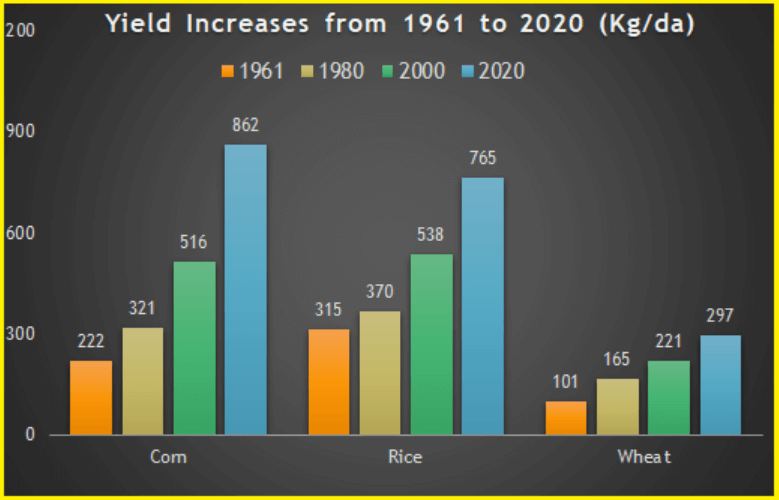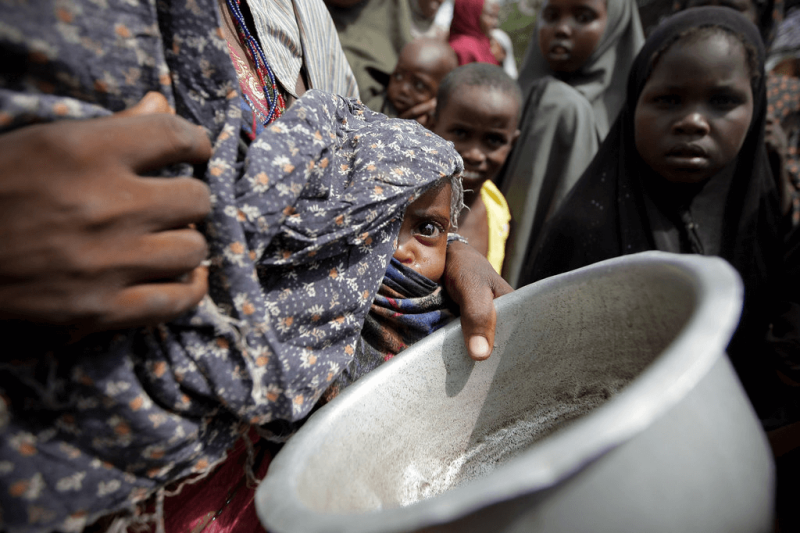How can we interpret the fact that the number of countries under the global hunger line increased from 26 in 2000, 79 in 2010, to 95 in 2023? It shows that the number of people facing hunger increased from 613 million in 2019 to approximately 735 million in 2023. The extreme poverty experienced in the world and the food riots that broke out in 30 countries in 2008 reveal the seriousness of the situation. If we add expectations such as more daily calorie requirements to these constraints, humanity is forced to seize the smallest opportunity for its own future. Moreover, it is expected that the world population will reach 11.2 billion by 2100. So how will we feed the future population with current production possibilities?
What is the status of agricultural production areas in the world? First, it is worth repeating this fact: While one hectare fed 2 people in the 1950s, 4 people in the 1999s, it must feed 5 people in the 2025s. In addition, it is a fact that changes such as heat waves, floods, storms and melting glaciers will greatly reduce agricultural production areas. What options stand out for the world to produce more food in the future?

Production methods
We can increase the existing agricultural potential with biotechnology, smart agricultural technological equipment and new production methods. In this context, stubble cultivation, precision agriculture, image perception and phytobiological information, remote sensing with satellite and aerial vehicles, fertilizer application techniques and control, plant protection detection and drug application techniques, greenhouse information technology applications, precision animal production and information technologies in fish farms and Developments in agriculture in space are expected. Some of these possibilities have already yielded results. For example, NASA grew potatoes, the first agricultural product, in space, while China grew vegetables in space.
In addition, farm and product management systems, information technologies in water management and control, storage and processing of food and raw materials, quality, supply, waste problems in the agricultural production and marketing chain, internet use, remote service and maintenance, E-support, blockchain and other information technologies. An increase in agricultural production can be predicted by taking advantage of the developments in the field. Many of these options are already in play. For example, blockchain application has started to be used in many country’s agriculture to prevent waste in agricultural products.
Production environments
At this stage, we first come across agronomic approaches to the sustainability of agricultural production: For example, stubble planting, second crop (in China, even four rice crops can be obtained per year), double cropping, soilless agriculture, floating fields on lakes, vertical agriculture, roof or warehouse-basement agriculture in the city. China’s transformation of the Taklamakan desert into electric solar fields, the construction of large dams, and the expansion of agricultural areas are pleasing developments for humanity. The issue of farmed fisheries is very promising. For example, biofloc technology has not yet been fully implemented in fish nutrition.
Genetic support
The hybrid technique, which provides increased yield in allogams crops by utilizing classical plant breeding, was applied to a self-pollinated crop, paddy, in China, and this country avoided being a rice importer by planting hybrid paddy in 56% of its paddy cultivation areas. Applying the same method to wheat can increase world wheat production. It is pleasing that the development of varieties resistant to drought, heat, diseases and pests has already begun, using genetic engineering and biotechnology. Particularly in methods such as “CRISPR-Cas9”, silencing the targeted gene with the help of temporary DNA cutting enzymes applied during the process, increasing or decreasing its effect, and subjecting it to micro-mutation has begun to obtain new genotypes in a short time.
We cannot say that we have yet put the theoretical yield potential of plants into practice. For example, even half of the 2.2 tons/da theoric yield of wheat and rice has not been reached yet.
Strategic and managerial breakthroughs
The food crisis that occurred after French winegrowers shifted their vineyard facilities to the United Kingdom (creating new areas for production) and Sri Lanka started organic farming throughout the country is a good example of this.
States and umbrella organizations should plan and implement research and development to develop new technologies and techniques to ensure food safety without wasting time. First of all, importance should be given to plant and animal breeding.
A good example is that the International Maize and Wheat Research Institute (CIMMYT), together with 13 countries, has registered 160 corn varieties tolerant to drought conditions within the framework of developing new varieties that will adapt to changing climatic conditions in the face of global warming. In this regard, the unification of infrastructure and personnel opportunities should be the priority of world umbrella organizations related to agriculture.
The role of animal production in global warming is known due to its contribution to methane. As a solution to both this problem and tomorrow’s increasing protein deficit, developments in plant-based artificial meat and fish technologies are promising in this context. These practices, such as milk, cheese, etc., will relieve animal husbandry and fishing, which come to the fore in terms of land and water use and are frequently suggested in climate change. By contributing to its production, we can think that we will not go hungry in the future.































